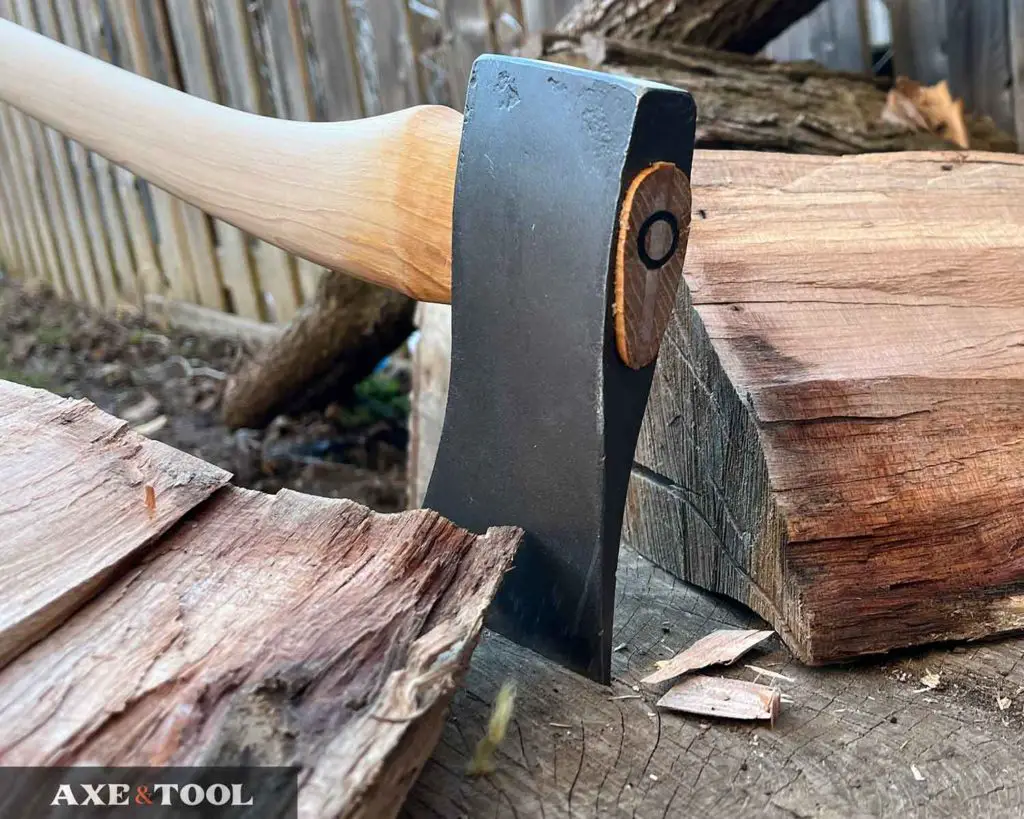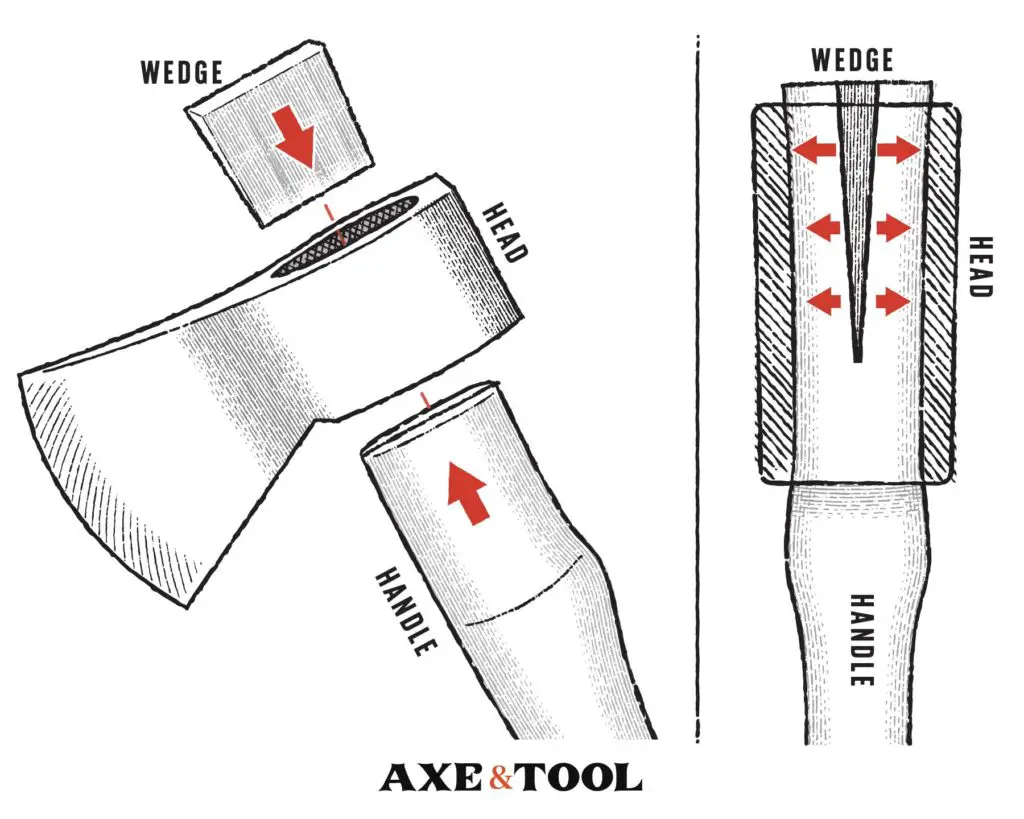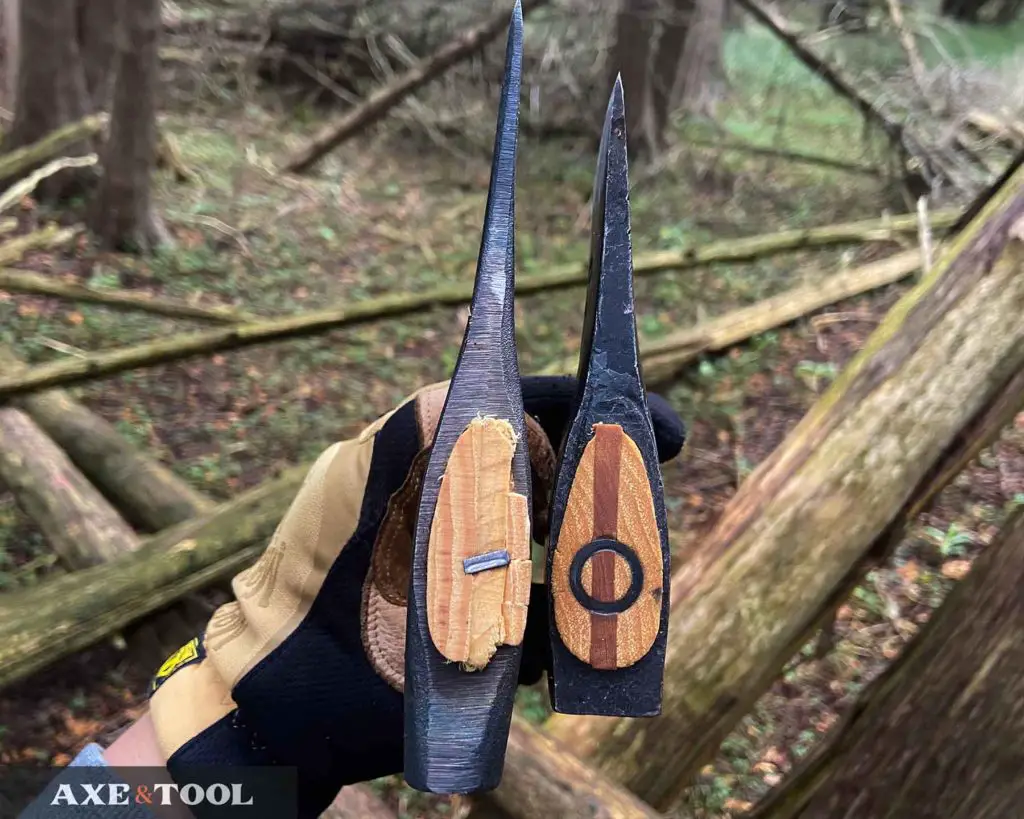The 3 Simple Machines in an Axe (+ bonus answer)

Simple machines are used to alter motion or modify force to make work easier. But while an axe may seem simple, and has no extra moving parts – it’s still considered “complex”.
An axe is a complex machine made up of 3 simple machines. The axe’s head is a wedge that can force wood apart. The axe’s handle is a lever that increases the force and effectiveness of the wedge. The third simple machine is another wedge used to secure the head to the handle.
| Parts of an Axe | Simple Machine |
|---|---|
| Axe Head | Wedge |
| Axe Handle | Lever |
| Attached together with | Wedge |
Sometimes there can even be a fourth simple machine which I explain further down.
The Axe Head is a Wedge

The head is a steel wedge designed to split or chop wood. The edge of the V-shaped wedge starts to cut, and the tapered sides redirect the force outward – spreading the wood apart.
Different axes have different profile wedges for different tasks.
Axes with long thin blades are better for chopping into the side of a tree as less force is diverted outward – allowing them to drive deeper. What outward force does occur from the wedge pushes the chips cut while chopping out of the notch in the tree.
Axes with a wider wedge shape are better for splitting logs as the steeper slopes transfer more force outward pushing each side of the log apart quickly. After the initial impact, the wide sides can often be the only part of the axe head still in contact with the log while the axe passes through.
The Axe Handle is a Lever

An axe head on its own isn’t very useful. The handle is a lever that amplifies the force potential of the axe head.
An axe handle is a third-class lever. The force applied is between the fulcrum (rotation point) and the resistance. With an axe, the fulcrum is the user’s shoulders, the resistance is the weight of the metal head, and the effort is exerted by swinging the handle.
The rotation of the swing means the head moves faster than the grip where the force is applied, allowing it to strike the wood harder and transfer more energy.
Another Wedge Holds an Axe Together

The hidden simple machine in an axe is the wooden wedge used to hold an axe together.
This is a unique example of how the force from a wedge can be used to tighten and attach two items, rather than forcing them apart.
A slot is cut into the end of the handle that goes into the axe head (this is called the kerf). Once the handle has been fit to the axe head, a wood wedge is hammered into the kerf. The wedge pressed the sides of the handle into the axe eye creating enough friction to stop the axe head from coming loose.
The handle and wedge are often allowed to stick out the top of the axe head slightly to ensure the axe head is indeed locked in place.
Bonus wedge

There can still be yet another wedge in an axe. Yes, that’s three wedges in one axe.
A smaller metal wedge can be hammered into the top of the handle to add additional pressure to keep the head on tight.
These metal wedges are often added when a head starts to get loose, or they can be added at the start as a preventative step.
Metal wedges can come as triangular wedges or circular “barrel” wedges.

